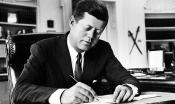lesson
The New Mad Men
“The New Mad Men” explores how changing demographics in the United States have changed the face of advertising. In particular, the focus is on the purchasing power of the 54 million Latinx people currently living in the United States. The episode visits the headquarters of LatinWorks, an advertising agency in Austin, Texas, with a specialty in multicultural advertising.
November 24, 2014
